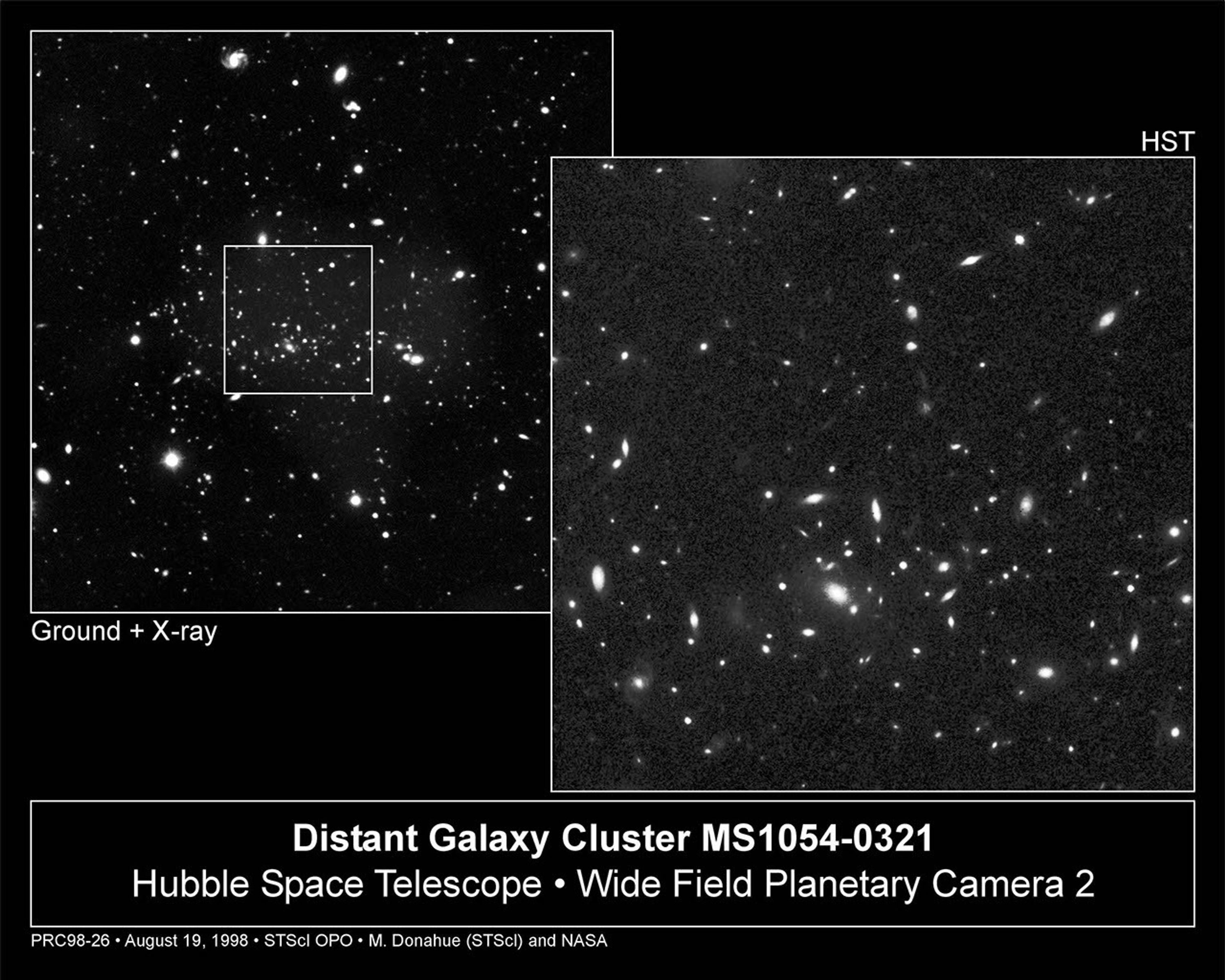1 min read
Hubble Captures View of Supernova Blast in Remote Galaxy Cluster

In March 1996, the Hubble Space Telescope's Wide Field and Planetary Camera 2 just happened to be pointed at the faraway galaxy cluster MS1054-0321 when it captured the light from an exploding star, called supernova 1996cl. The cluster is 8 billion light-years from Earth.
The Hubble telescope can clearly distinguish the supernova light from the glow of its parent galaxy. The larger image on the left shows the entire cluster of galaxies. The galaxy where the supernova was discovered is located in the boxed area. The bright knot of light from the supernova and the fainter glow from the parent galaxy are shown in the inset image on the right. The arrow points to the light from the supernova explosion.
The supernova was discovered by members of the Supernova Cosmology Project, led by Saul Perlmutter of Lawrence Berkeley Laboratory in California. Perlmutter and his team made this discovery using images from the Hubble telescope and ground-based observatories. The Hubble data were furnished by Megan Donahue of the Space Telescope Science Institute. Donahue was using the Hubble telescope to study galaxy cluster MS1054-0321.
Members of the Supernova Project use ground-based telescopes to search for distant supernovae, such as 1996cl, by comparing multiple, wide-field images of galaxies and clusters of galaxies taken at different times. Supernovae are named for the year and the order in which they are found.
Supernova 1996cl is a Type Ia supernova. Exploding stars of this type are particularly useful for cosmology because they share a standard maximum brightness. By measuring this brightness, astronomers can determine a Type Ia's distance from Earth. Astronomers use this information to measure the expansion rate of the universe.
About the Object
- R.A. PositionR.A. PositionRight ascension – analogous to longitude – is one component of an object's position.10h 57m 0.19s
- Dec. PositionDec. PositionDeclination – analogous to latitude – is one component of an object's position.-3° 37' 27.0"
- Object NameObject NameA name or catalog number that astronomers use to identify an astronomical object.MS1054-0321, SN 1996cl
- Release DateAugust 19, 1998
- Science ReleaseDistant Heavyweight Galaxy Cluster Clobbers Dense-Universe Theory
- Credit
Related Images & Videos

Views of Galaxy Cluster MS1054-0321 From Ground and X-Ray Observatories (left) and Hubble (right)
These images, taken by three different telescopes, show the distant, hefty galaxy cluster MS1054-0321, containing thousands of galaxies and trillions of stars. Weighing the equivalent of several thousand of our Milky Ways, the cluster is 8 billion light-years from Earth. The...
Share
Details
Claire Andreoli
NASA’s Goddard Space Flight Center
Greenbelt, Maryland
claire.andreoli@nasa.gov
































